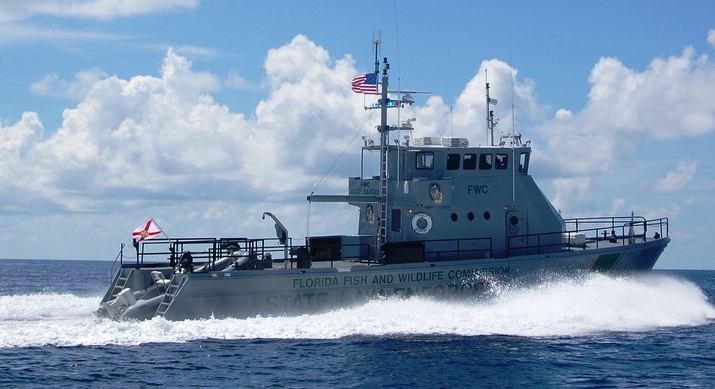Florida state’s 85-foot patrol boat
Florida Department of Fish and Wildlife Conservation (FWC), with some 1947 full time employees is one of the largest game warden agencies in the country. It also operates one of the largest non-DoD, non-DHS owned patrol craft.
The Heavy Endurance Class offshore patrol vessel Gulf Sentry, with a crew of 7 wardens, is a 85-foot aluminum-hulled vessel based at Carrabelle City Marina.
It has too because FWC’s territory covers 2,276 miles of tidal shoreline, 53,927 square miles of land and 5,983 square miles of water. This encompasses more than 34 million acres of public and private land, including 5.8 million acres of wildlife management area.
The Gulf Sentry was originally manufactured as the JJ Brown in 1967 for the U.S. Air Force and, based at Tyndal near Panama City was used as a missile-retriever in the Gulf responsible for locating and recovering sub-scale aerial targets in the Gulf of Mexico W151 Live-Fire Range until 1994. The National Oceanic and Atmospheric Administration used it next and eventually loaned the vessel to the FWC (then the Florida Marine Patrol (FMP), which performed federal fisheries enforcement and search-and-rescue missions with it for the next 14 years. She was finally turned over from NOAA in 2008, then some 30 years old and in poor material condition.
Refurbished by Derektor in Dania over a two year period, she was renamed Gulf Sentry after an extensive refit. This included, according to the company a “new bottom, bow design, engines, electrical, plumbing, berthing area, galley and new pilot house. She is virtually unrecognizable as the original vessel. The Gulf Sentry has numerous green features incorporated into her new design. These modifications include: C32 ACERT engines that drive her at 31 knots while meeting tier two emission regulations (no smoke and better fuel economy, also a building block for future emission standards); elimination of all external hydraulic systems, to avoid potential loss of oils (all systems are now pneumatic-air driven); recycled materials were used in construction of cabin interiors; fuel-fill system was designed to eliminate / reduce fuel spills during fill ups; and the shaft angles, rudders and bottom were redesigned to increase efficiency. A new launch well was installed in the stern of the vessel to deploy the ridged hull inflatable boat to assist with search and rescue in rough seas.”
She operates primarily between St. Marks and Pensacola, out to 200 miles offshore.


Pingback: FWC’s OPVs | laststandonzombieisland